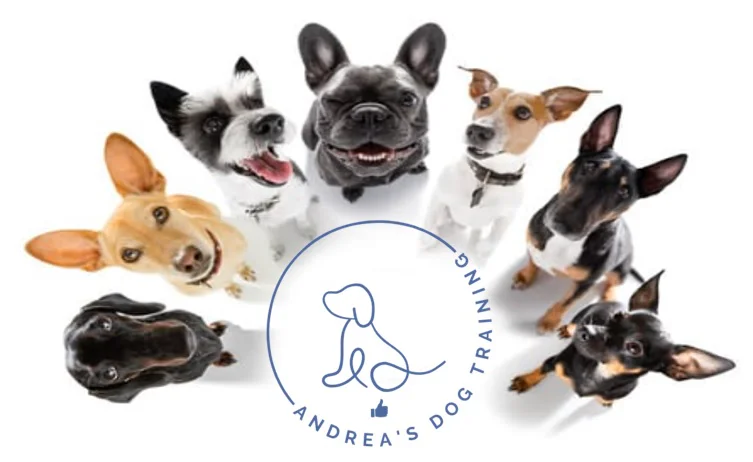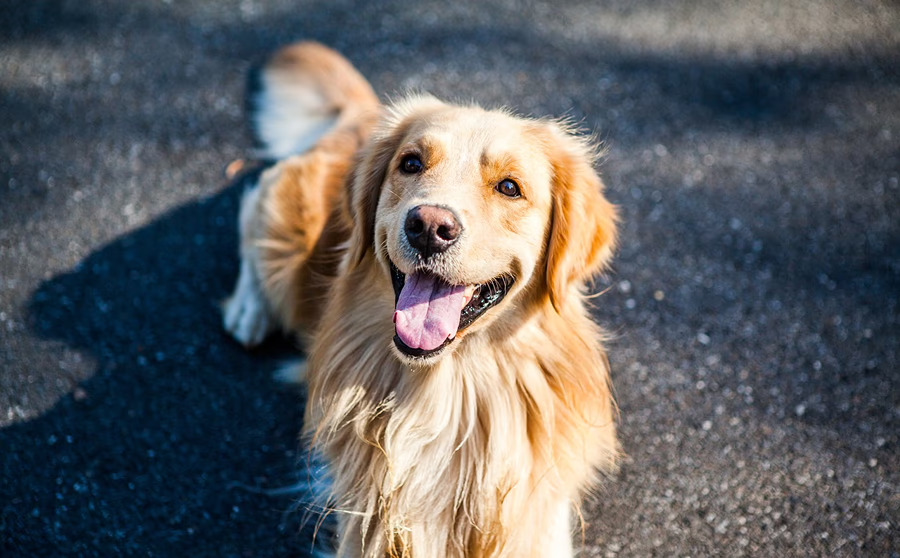Client: Sam, a 2-year-old female Golden Retriever
Trainer: Andrea Scott
Background:
When I first met Sam in, a two-year-old Golden Retriever, it was clear that she was a dog with an abundance of energy and enthusiasm. Her guardians, while deeply in love with her, were struggling to manage her behavior, particularly her excitability, leash pulling, and separation anxiety.
Sam’s friendly and social nature, while endearing, had become a source of stress for her family, especially when she would jump on visitors or pull them down the street during walks. They reached out to me to help transform Sam’s behavior and to create a more harmonious home environment.
Initial Assessment:
During our initial consultation, I observed that Sam was highly excitable and had difficulty controlling her impulses. She was quick to jump up on me to greet, pulled strongly on the leash during a short walk, and exhibited signs of anxiety when left alone, even for a brief period. Despite these challenges, I could see that Sam was intelligent, eager to please, and highly motivated by treats and praise—a combination that would serve us well in her training journey.
Training Goals:
The primary goals for Sam’s training were:
- Impulse Control: Teaching Sam to greet people politely without jumping.
- Leash Manners: Reducing leash pulling to make walks more enjoyable.
- Separation Anxiety: Alleviating her anxiety when left alone to prevent destructive behaviors.
Training Plan:
The training program for Sam was structured over several weeks, with a mix of in-home sessions and practice exercises for her guardians to continue between our meetings. Given her temperament, I decided to focus on positive reinforcement techniques, using rewards and praise to encourage desired behaviors.
- Impulse Control:
To address Sam’s jumping, we started with basic obedience commands, particularly “sit” and “stay.” These commands were crucial in teaching Sam to control her excitement. We worked on these commands extensively, particularly in situations where Sam was most likely to jump—when greeting guests at the door. By rewarding her for sitting calmly and ignoring her when she jumped, Sam quickly learned that calm behavior was the key to getting attention and treats.
- Leash Manners:
Leash pulling was a significant issue, so I introduced a no-pull harness to help reduce the strain on her guardians during walks. We practiced the “heel” command, rewarding Sam whenever she walked beside her guardians without pulling. The approach was to stop walking the moment she started to pull and resume only when she returned to the correct position. This method required patience and consistency, but over time, Sam began to understand that staying close to her guardians was more rewarding than forging ahead.
- Separation Anxiety:
For Sam’s separation anxiety, we implemented a gradual desensitization plan. I advised her guardians to start by leaving her alone for very short periods, gradually increasing the time as Sam became more comfortable. Crate training also played a role in this process, providing Sam with a safe space where she could relax. We made the crate a positive environment with her favorite toys and occasional treats, helping her associate being alone with positive experiences.
Challenges Encountered:
Like any training process, we encountered some challenges along the way. Sam’s high energy levels sometimes made it difficult for her to focus, especially in stimulating environments. However, by keeping training sessions short and frequent, we were able to maintain her interest and gradually build up her attention span.
Results:
Over the course of the training program, Sam showed remarkable improvement. Her impulse control improved significantly—she no longer jumped on guests and learned to greet people calmly. Leash pulling was reduced to the point where walks became enjoyable for both Sam and her guardians. Perhaps most importantly, her separation anxiety diminished considerably, allowing her to stay home alone without becoming distressed.
Guardian Feedback:
Sam’s guardians were thrilled with the progress she made. They reported that she was calmer, more obedient, and that their bond with her had deepened as a result of the training. The success of Sam’s training not only improved her behavior but also enhanced the overall quality of life for her and her family.
Conclusion:
Sam’s case is a perfect example of how a well-structured training program, tailored to a dog’s specific needs and personality, can lead to significant behavioral improvements. Through consistency, positive reinforcement, and a lot of patience, Sam transformed from an overly excitable and anxious dog into a well-behaved and happy companion.
For anyone facing similar challenges with a Golden Retriever, or any high-energy breed, I hope Sam’s story serves as an encouraging reminder of what’s possible with the right approach to training.
Please reach out to me if you would like a 15 minute Free Consultation.
Future Recommendations:
While Sam has made great strides, I recommended that her guardians continue to reinforce the training, particularly in new or challenging situations. Regular mental stimulation, continued obedience practice, and consistent routines will help maintain her progress and ensure she continues to thrive as a beloved member of the family.








